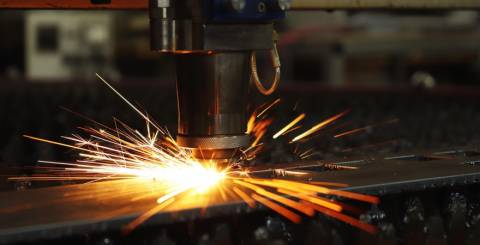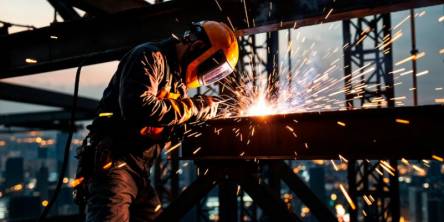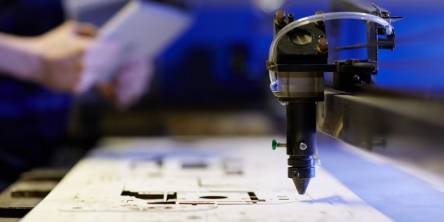The Intricacies of CNC Turning and Its Operational Mechanics

Introduction to CNC Turning
In the ever-evolving landscape of precision manufacturing, CNC Turning is a cornerstone technique pivotal to producing cylindrical parts. Distinguishable from milling processes that sculpt flat surfaces, CNC turning rotates a workpiece, allowing a fixed cutting tool to shape it meticulously. This process is instrumental in achieving complex geometries and maintaining high precision levels. Industries ranging from automotive to aerospace gain significant advantages from CNC turning, as it improves production speed and accuracy while minimizing dependence on manual adjustments, thereby decreasing errors.
Fundamental Components of a CNC Lathe Machine
A CNC lathe machine operates through several core components that streamline manufacturing tasks:
Spindle: At the machine's heart, the spindle holds the workpiece in alignment as it spins at controlled speeds, providing the necessary rotational movement for machining tasks.
Tool Holder: This crucial part ensures the cutting tool remains in precise alignment, maintaining the desired angle and position against the spinning workpiece to achieve the correct cut.
Beds: Acting as the machine's foundation, the beds provide essential stability, ensuring all components are aligned accurately to produce high-quality outcomes.
Tailstock: Positioned at the machine's endpoint, the tailstock offers additional support to the workpiece, mitigating any potential deflection during turning operations.
How CNC Turning Works
Central to CNC turning is the gradual removal of material from a rotating workpiece through a stationary cutter. A computer program governs this process, dictating the movements necessary to maintain consistency and high precision. As explained in HowStuffWorks, CNC machining relies on automated instructions to precisely control tools and components, ensuring uniformity across production. By minimizing the need for manual interventions, CNC systems ensure optimal efficiency. This program-driven control reduces the chances of human error, allowing for seamless production runs that adhere closely to design specifications, whether for a single prototype or mass production.
Advantages of Using CNC Turning
The precision offered by CNC turning is unparalleled, providing the capability to maintain exceptionally tight tolerances. This precision is vital when manufacturing complex shapes that demand consistency across the board. Additionally, CNC turning significantly enhances efficiency in large production runs. The automation allows for repeatability without compromising on quality, translating to substantial time and cost savings for manufacturers while ensuring that the integrity and quality of each part are maintained. As highlighted in a recent article on Manufacturing Tomorrow, advancements in CNC turning technology are streamlining production processes and pushing the boundaries of what’s possible in precision manufacturing. These innovations reduce lead times and enable manufacturers to respond more quickly to market demands. As industries progress, the flexibility of CNC turning guarantees it stays a fundamental aspect of contemporary manufacturing. With continuous improvements in software and tooling, its potential continues to expand across various high-tech sectors.
Read more: Ultimate Guide to CNC Foam Machining
Common Applications of CNC Turning
CNC turning is indispensable in various industrial applications, providing a robust solution for producing diverse components. The aerospace industry heavily relies on CNC turning to create precision-engineered parts essential for space and aircraft, where even minor imperfections can have significant consequences. Similarly, the automotive sector utilizes CNC turning for components like crankshafts, gear blanks, and other critical parts that necessitate precision and durability to ensure optimal performance and longevity.
Challenges and Considerations in CNC Turning
Despite its many benefits, CNC turning presents challenges such as tool wear and prolonged setup times, affecting overall productivity. Regular maintenance and precise calibration are vital to addressing these issues, ensuring the equipment functions optimally throughout the production cycle. Moreover, keeping up with technological progress can offer a competitive advantage, allowing organizations to address these challenges more efficiently.
Latest Trends and Innovations in CNC Technology
CNC technology is witnessing transformative shifts, primarily by incorporating AI and IoT. These innovations facilitate predictive maintenance—proactively addressing potential equipment failures—thereby minimizing downtime and enhancing efficiency. The integration of IoT further augments this landscape, enabling more innovative manufacturing environments that respond dynamically to production demands, setting the stage for significant industry transformations that streamline operations and improve output quality.
Conclusion
As we project into the future, the path for CNC turning appears bright and filled with potential. Technological innovations continue to refine and elevate the process, offering enhanced precision, efficiency, and quality. As industries evolve and adapt to new demands, CNC turning remains a critical facet of manufacturing, championing innovation and expanding capabilities through its integration into modern production infrastructures worldwide.
Similar Articles
When you see a steel ship in the harbor, the first impression is usually sheer scale.
In the competitive industry of car manufacturing, attaining exceptional performance along with an innovative design needs the incorporation of modern manufacturing technologies
Facing delays, quality issues, or supply chain problems in hardware manufacturing? Learn the top 7 challenges—and practical fixes—to streamline production.
In the rapidly advancing landscape of high-tech manufacturing, electronics, and materials science, diamonds are no longer just gemstones they’re high-performance materials redefining what’s possible in technology.
A business in the manufacturing industry today has to ensure that it chooses the precision-engineered components suppliers keenly since the competition is very stiff
Selective Laser Sintering, or SLS, has established itself as one of the most reliable and widely used 3D printing technologies. This method is valued for its ability to produce complex, durable, and high-quality parts without the constraints of traditional manufacturing.
In the retail and display industry, the visual appeal of products is paramount. Customers are constantly drawn to displays that are not only eye-catching but also provide an immersive experience.
As previously established, CO2 laser technology operates by shining a high-power infrared beam on a mixture of gas that contains carbon dioxide, nitrogen, and helium. This technology is well known for the fact that it is able to engrave onto a variety of materials such as wood, glass, plastic, leather, and even some metals with high precision and without contact.
CNC Machining has emerged as a vital technique in the current production process, as it provides an efficient and accurate means of manufacturing items with complex geometries. This technology is applied across aerospace, automobile, and medical devices manufacturing fields, and various other industries.









